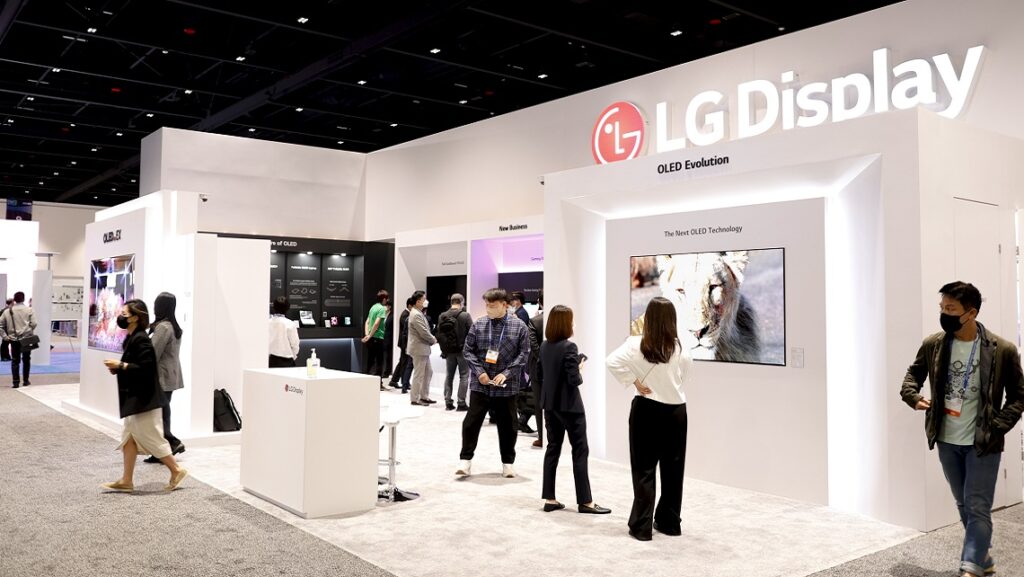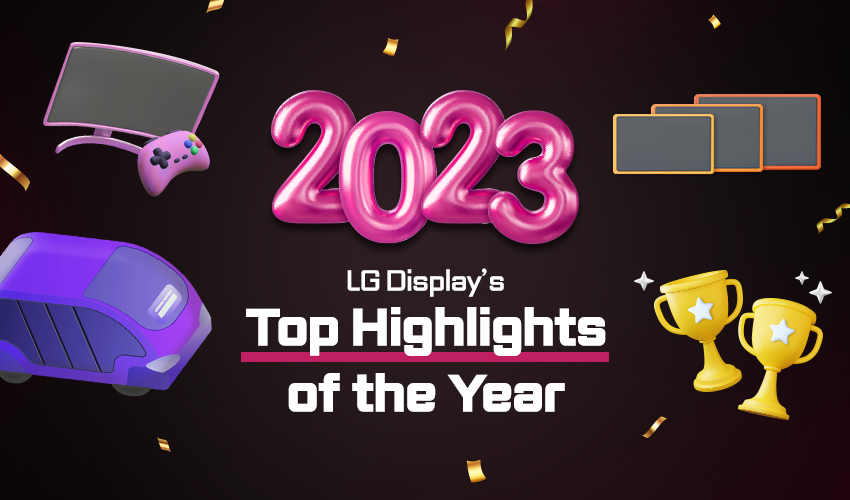By Alex Jensen
Wherever you look, it seems that major changes are afoot in the automotive world. Electric vehicles, autonomous vehicles, and the marriage of technology and mobility are all trending, including the Detroit Auto Show’s recent promise to reflect the “mobility transformation underway” when it returns this September.
It’s clear that various technologies have huge roles to play as the whole process of choosing and using a vehicle becomes more like the consumer electronics experience. Right up there among the specs to weigh up will be the quality and diversity of a vehicle’s displays. Back in March, I explored the growing importance of automotive displays today and in the car of the future – and that has been further underscored as “automotive applications were very prominent at Display Week this year.”
I also previously noted how Korean media had cited market watcher Omdia’s expectation that the vehicle display market will expand 11% this year to US$9.6 billion. That figure’s expected to increase to US$10.7 billion by 2024, while another Korean report points to a 2027 forecast of US$14 billion, citing Display Supply Chain Consultants. So, it’s time for a fresh look at the trends driving this optimistic outlook.
Bigger and better auto displays
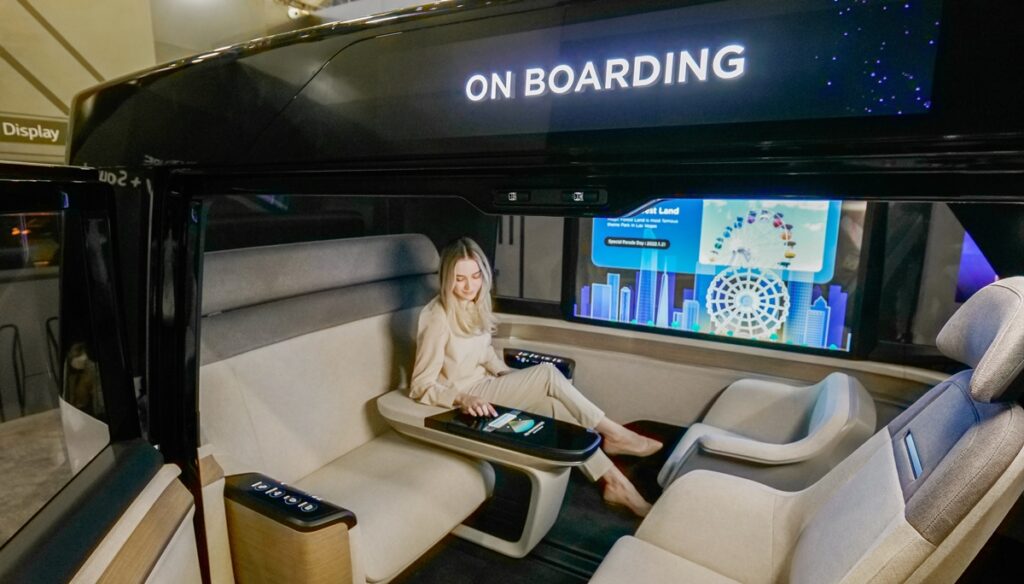
One explanation for the expansion of automotive displays, based on Korean media analysis, is “increased demand for ultra-large displays and OLED panels of 10 inches or larger.” We saw plenty of both inside LG Display’s concept car at CES 2023, which still shines as a gold standard for what’s possible with automotive displays. For instance, the company’s 57-inch Pillar to Pillar display – the world’s largest automotive LCD – turns a traditional dashboard into an expansive and integrated screen.
As for OLED, its increasing popularity in vehicles is demonstrated by Korean media citing Omdia’s upward revision of its forecast for automotive OLED display panel shipments to 1.14 million units this year, up from its original estimate of 890,000 units, and all the way to 5 million units by 2026.
Bringing the quality of OLED TVs to vehicles hasn’t been easy, but the process has seen LG Display develop innovations such as P-OLED – with the “P” standing for plastic substrate. P-OLED shares OLED’s vivid picture benefits, design advantages, and eye protection (with the automotive industry’s first-ever Eye Comfort Display certification), but its incorporation of double-layered Tandem OLED technology is also able to “deliver brighter screens and disperse energy across the OLED components for optimal stability and a longer lifespan.” And we may soon be able to expect P-OLED offerings in the 50-inch range judging by LG Display’s announcement at the start of the year.
Diverse and discreet auto displays
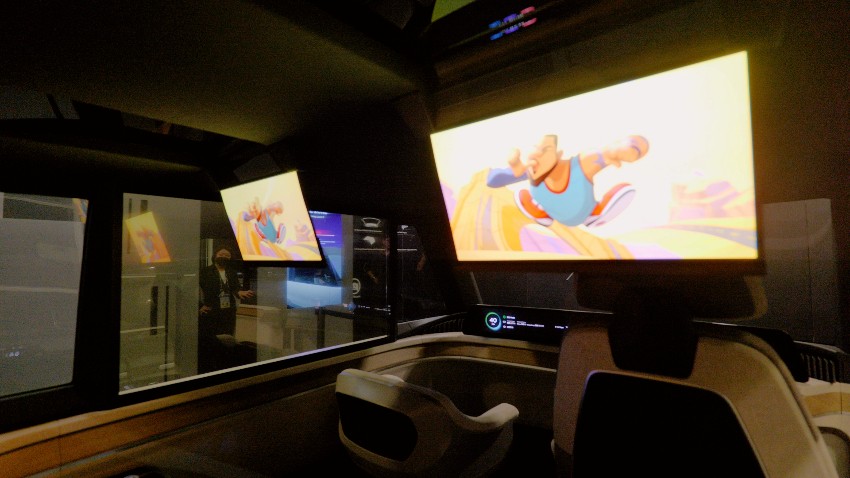
If drivers and passengers of the future (and perhaps we will all be passengers riding autonomous vehicles) value diverse options as much as consumers do today, then we will also need a range of automotive display choices.
OLED’s self-emissive technology does allow for diversity through futuristic and flexible form factors, including LG Display’s 18-inch Slidable OLED that tucks into a vehicle’s ceiling and can extend down when needed. Another highly innovative consideration would be the company’s 55-inch Transparent OLED that offers a window-like display with the benefits of keeping passengers informed and entertained.
Generally speaking, the mobility space appears to be as suited as any for all the buzzword technologies many expect to advance us into the future – from 3D to artificial intelligence. Perhaps in a few years from now, we’ll be discussing displays in flying cars!
Screenification and electrification
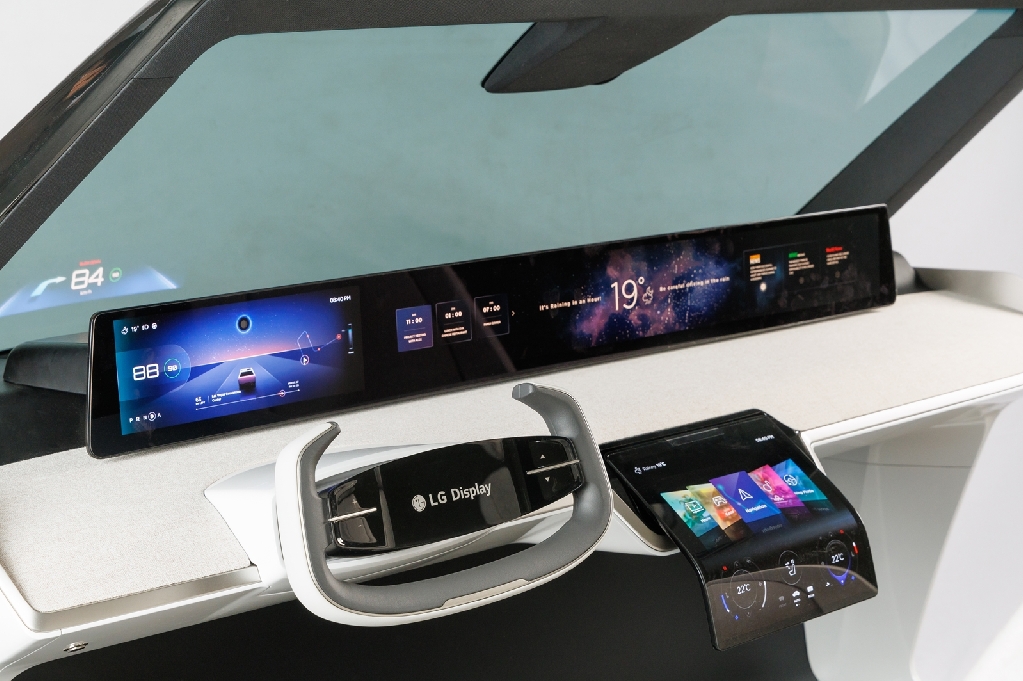
The so-called “screenification” of vehicles is happening in line with their overall electrification. The upward trajectory of the vehicle electronics industry is such that it could be worth US$415.6 billion in 2027, up from US$315 billion this year. And by 2030, electronics are forecast to make up about 50% of the cost of a new car, compared with 35% in 2010 and just 10% in 1980. To look at it another way, according to a July 3 report from eBest Investment & Securities cited by Korean media, the vehicle electronics market is anticipated to surpass that of smartphone parts as soon as this year.
Vehicle electrification additionally creates greater momentum and possibilities for products like displays. But with so many electronic products and parts entering this space, it is important that power consumption is well balanced to protect vehicle batteries. On that note, we might highlight that P-OLED is 85% lighter and cuts power consumption by 60% compared with traditional LCD displays.
Ultimately, mobility has reached a watershed moment – and the future holds great promise for a range of technologies, not least displays.





